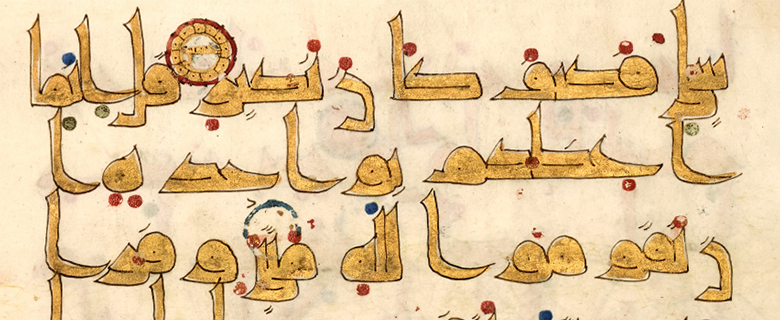
For more than 1,000 years, Arabic and Islamic calligraphy have been admired as an art form that conveys both beauty and truth, and here at our Heritage Library we have hundreds of these exhibits and our Digital Repository presents images of these.
Available for everyone to view - whether you are a professional researcher or are simply curious about the art form – our Digital Repository forms a valuable history of calligraphy, showing how the craft has developed in style and technique across hundreds of years up to the modern day.
Arabic calligraphy was most probably popularized and developed to preserve and spread the message of the holy Qur’an, and as such the script was purposely made beautiful to reflect the words of Allah. This beauty also lent itself to use in a variety of fields, including poetry, architecture, education and craftsmanship and as such it is intrinsically linked with Arabic civilization. Arabic script itself lends itself very well to calligraphy, as the letter shapes vary depending on where they are within a word, and the pen strokes connecting them can be shortened or lengthened depending on the writer and the demands of the text.
While the tradition of calligraphy in other countries has fallen by the wayside, in the Arab world it remains a popular form of artistic expression.
It may be obvious, but calligraphy involves different fonts and indeed different writing implements. For example, kufic is the earliest of the Arabic styles, and is characterized by angular strokes - but it fell out of popularity as it is difficult to write, whereas diwani was developed during the early Ottoman empire and was often used by royalty. Nastaliq is predominant in Persian calligraphy while thuluth was often used in early copies of the Qur’an. The most common style, though, is naskh which translates into English as ‘to copy’. This style of calligraphy was established around the 10th century (4th century of the Islamic era) and is a small, rounded script that is easily legible. This led it to be used for administrative documents, but most importantly it has been the prevalent style for copying the Qur’an, ensuring its words and message are conveyed with precision and clarity.
Our digital collection at the Library comprises all these styles, with notes for each exhibit describing the style, its origin and the date of composition. This allows everyone to appreciate the historical importance of calligraphy and the Arabic language itself, uniting people from different countries and cultures under a common language and a common religion. It also gives you and your family a good opportunity to have a go at calligraphy for yourselves. Try asking your children to write their names using all the different styles that they can find.

Add new comment